Art Fairs
Who Should Take Over the Armory Show? We Survey Seven Contenders
We spoke to art experts and dealers about who might be a good fit for the job.

We spoke to art experts and dealers about who might be a good fit for the job.

Eileen Kinsella

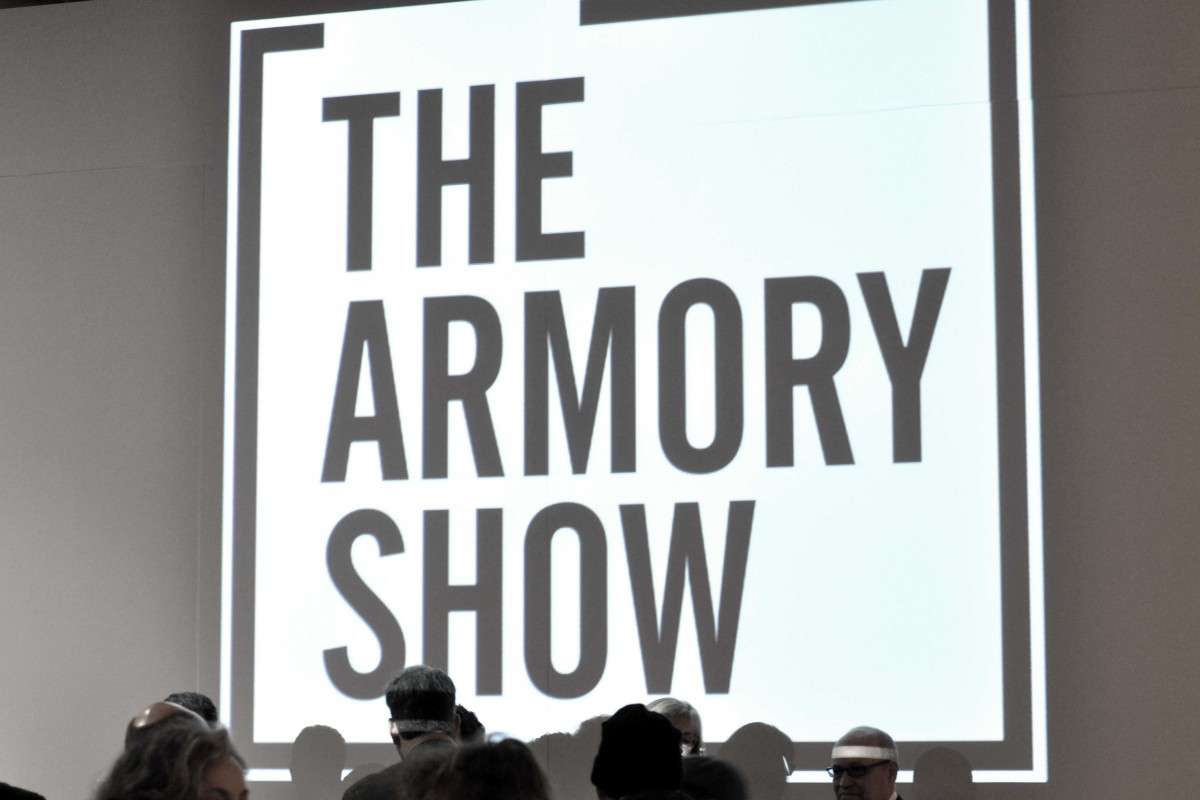
The news, last month, that Noah Horowitz was leaving his post as director of the Armory Show to head up Art Basel in Miami Beach caught the Armory’s executives off guard. One person with knowledge of the search process told artnet News that they’re scrambling to find a replacement. Where will they look for new leadership? To another member of academia like Horowitz? Top art gallery managers? Existing directors of other successful art fairs?
For starters, management has hired headhunting art specialty firm Sophie Macpherson.
In a listing for an executive director for an “art fair in New York,” the Armory Show is not identified though our source confirmed to artnet News that it is the client in question. The following description appears:
“Our client, a leading international contemporary and modern art fair in New York, seeks a highly motivated, creative, and experienced Executive Director to serve as visionary and leader of the fair. This position will successfully lead the organisation with sales of booths, gallery relations and creative vision for the fair. Other key responsibilities include management of department heads, development of strategic and financial plans, budget management and supervision of programming and curatorial initiatives. This position calls for active engagement and networking within the art world, and to this end we are seeking an individual who has a familiarity with the contemporary art world landscape and relationships with key figures including collectors, curators, galleries, artists and media contacts.”
Horowitz, who penned a well received book about the global art market called The Art of the Deal: Contemporary Art in a Global Market, and who is part of the faculty at Sotheby’s Institute of Art, has been widely lauded for invigorating and tightening up the Armory Show as well as lending it a truly global dimension by focusing in on specific regions each year such as Asia and the Middle East.
In the years leading up to Horowitz’s appointment, exhibitors and visitors alike complained that the fair had become irrelevant and unfocused, having lost some major exhibitors as well, in part due to new competition from the New York edition of Frieze.
The show itself has a legendary art world back story. The brainchild of New York dealers Paul Morris, Matthew Marks, Pat Hearn, and Colin Deland, the fair was launched in the late 1990s, in the depths of the art market recession, at the Gramercy Park Hotel. Dealers exhibited in hotel rooms, spreading their wares across hotel beds and in bathrooms—no nails were allowed in the walls—and then bunked there at night. Over time, the fair grew into the international behemoth it is today at the piers on the far West side of Manhattan.
So what does the Armory Show need from a leader now? We reached out to one of the show’s founding members, Paul Morris, who served as director for many years and is currently working on special projects at the Hammer Museum in Los Angeles. In a phone interview from LA, Morris told artnet News that the fact the original fair was founded by dealers helped make it a great fair because it would be “like a guest checking into a hotel that they designed completely,” meaning according to their own desires and specifications.
“As dealers, we really knew what we needed for the fair to make it really successful,” said Morris. “A director needs to have deep knowledge and relationships with dealers on one side and collectors on the other side. Above it all, I think, you have to honor the artists. The four of us had a habit of asking ourselves ‘Does it help artists? Is it in service to the art?’ If the answer was ‘Yes,’ we would go with that idea.”
We surveyed other art experts and dealers about who might be a good fit for the job. Here’s what we found:
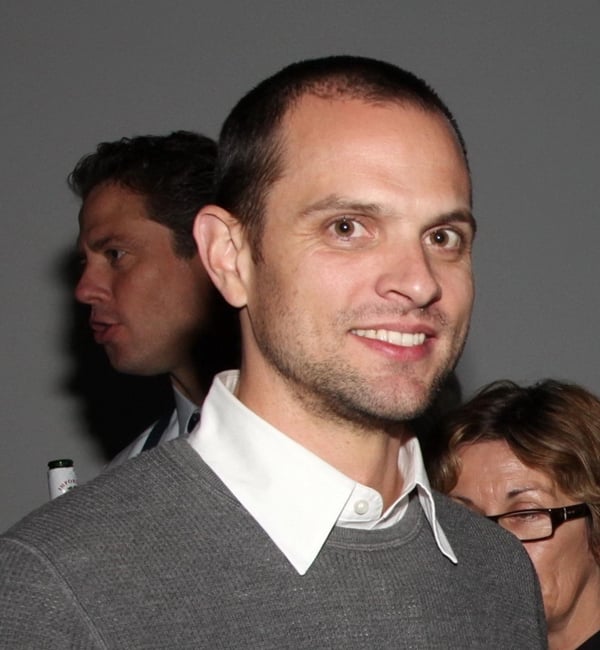
Cornell DeWitt.
Photo: © 2014 Patrick McMullan Company, Inc.
1. Cornell DeWitt
Cornell DeWitt has played many art world roles in the past two decades and he has the depth and breadth of knowledge to show for it. He ran his own eponymous gallery in New York, has curated exhibitions, advised private collectors, and served as director of the PULSE Contemporary art fair in Miami and New York for four years (2010–2013), leading it to its highest ever attendance level and profitability. In the last year, he served as vice president of business development at artnet (parent company of artnet News), where he developed the company’s extensive market reach into improved performance for its clients and partners.
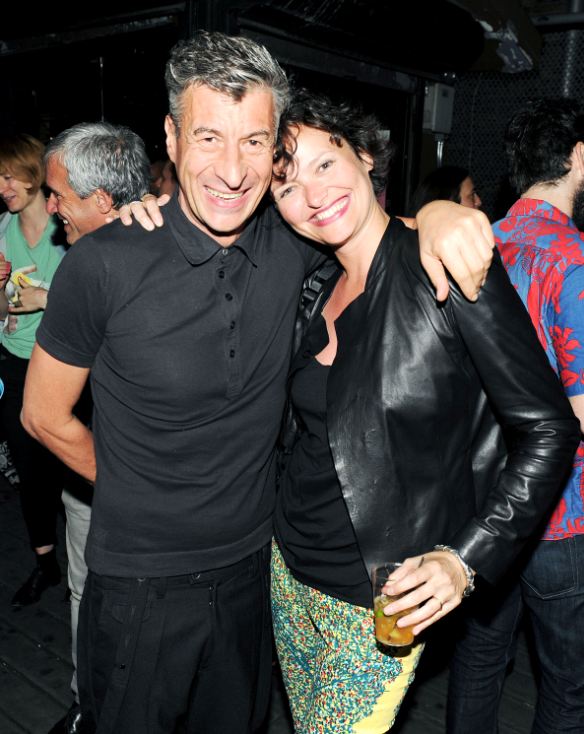
Cecilia Alemani with artist Maurizio Cattelan.
Image: Courtesy of Guest of a Guest.
2. Cecilia Alemani
For a dynamic player in the stuffy upper reaches of the art world, Italian-born Cecilia Alemani has a surprisingly cheerful and easygoing personality. Her main role for the past few years has been as chief curator of High Line Art, the program for the elevated park on the far west side of Manhattan in the heart of the Chelsea gallery district, which has been drawing crowds since its opening in 2009. Alemani’s passion for contemporary art and willingness to take risks is palpable. She has been the driving force of the park’s innovative art program that has included dazzling site-specific installations, commissions, exhibitions, and performances by artists such as El Anatsui, Carol Bove, Ed Ruscha, Spencer Finch, and Sarah Sze. Having been involved with another high profile fair, Frieze New York (where she curates site-specific projects), since its first iteration on Randall’s Island, she’s no stranger to the fair circuit.
An Elle magazine profile in 2013 hit on what many in the art world find so refreshing about Alemani. “I was expecting this super sophisticated, intimidating Italian woman,” said Highline co-founder Robert Hammond. “But she was so accessible and friendly. She wants to make this program work not just for the art world, but for [all] people.” Alemani is also one half of an art world power couple: she’s married to New Museum director of exhibitions Massimiliano Gioni, who she met through contemporary artist Maurizio Cattelan.

Jeffrey Deitch in front of the old Jeffrey Deitch Projects.
Photo: Purple Fashion Magazine.
3. Jeffrey Deitch
Another longtime art world denizen who has also worn many hats, Jeffrey Deitch has been a dealer, a museum director, a consultant, and an arts writer. Could “fair director” be the next title he adds to his resume? For years, he operated his eponymous SoHo gallery Deitch Projects, notable for its risk-taking, large scale (read expensive) projects by emerging and established artists alike. Having made his fair share of headlines when he defected to the West Coast to run the Museum of Contemporary Art in Los Angeles, he was eventually forced out and is now back in New York. He seems to crop up everywhere. In the past few months alone, he was responsible for Miley Cyrus’s much-hyped performance at this past year’s edition of Art Basel in Miami Beach, curated a high-profile show of street murals at Coney Island (Coney Art Walls), and penned the introduction to German economist and professor Magnus Resch’s buzzed about new book, Management of Art Galleries. An added bonus for Armory Show management is Deitch’s ability to deliver where the bottom line is concerned. Prior to opening a gallery, Deitch was a vice president of Citibank where he spent nine years developing and managing the bank’s art advisory and art finance businesses.
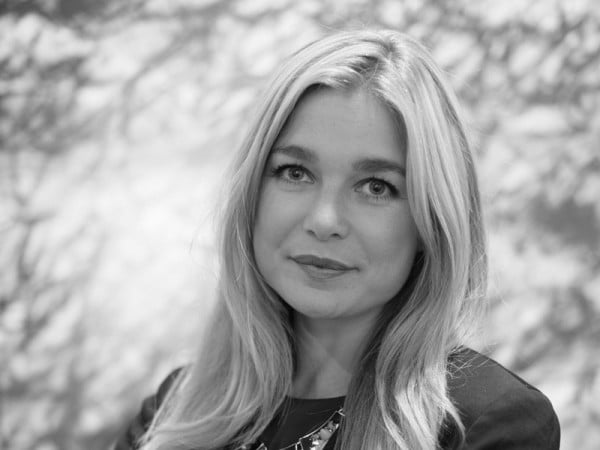
Kate Bryan. Image: Courtesy of Art15.com
4. Kate Bryan
If Armory Show organizers decide to look to Europe for a new leader, or focus on more of an up-and-comer, Kate Bryan could be a candidate, several people close to the process told artnet News. Bryan was named head of London’s nascent “Art 15” less than a year ago, but she’s already making her mark and generating buzz. Bryan’s self-professed goal at the time of her hiring was “to make the fair global in all regards, from galleries to artists, and from collectors to not-for-profit spaces. I will draw from the knowledge of our expert advisory board that supports us throughout the world including South Korea, Indonesia, France, China, USA, Italy, Dubai as well as here in the UK.”
Bryan was previously director of contemporary art at the Fine Art Society, London’s oldest commercial gallery, where she was responsible for building the contemporary art exhibition program and fostering a collector network with a focus on Asia and the USA. She lived in Hong Kong from 2007 to 2011, where she served as director of the Cat Street Gallery, one of the founding galleries that participated at ART HK. She is also a seasoned art broadcaster, having presented programs on the BBC, Sky Arts, and Channel 4.
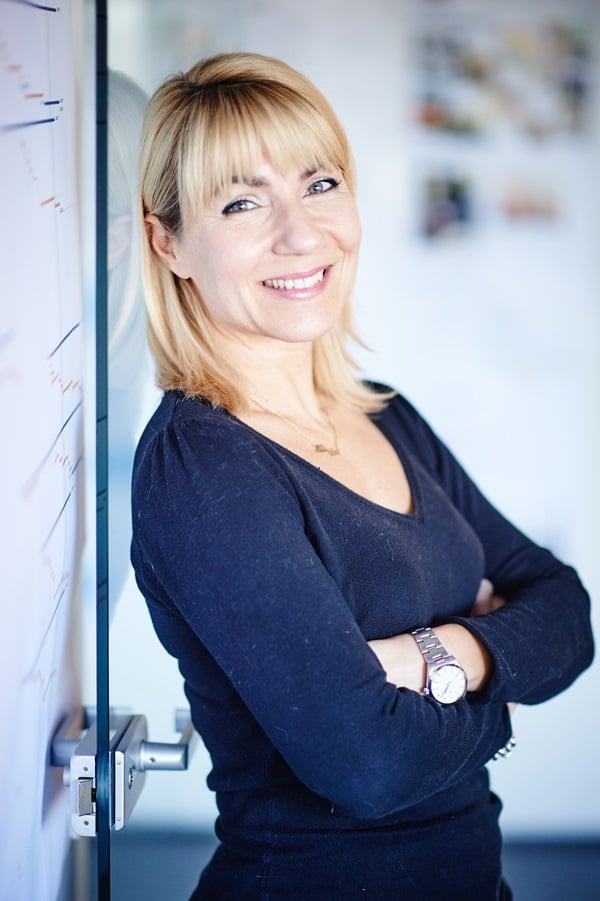
Katerina Gregos. Photo by David Plas.
5. Katerina Gregos
Also falling in the category of a European leader with a fast-growing reputation is Greek-born, Brussels-based Katerina Gregos, the artistic director of Art Brussels. She appeared on artnet News’s list of the most influential women in Europe. Since taking the helm of Art Brussels in 2012, Gregos has installed a fresh, new design for the fair and brought in new collectors, galleries, and artists alike. She is credited with helping bring back dealers who had begun opting for other European cities over the Brussels fair. “I try to implement projects that will be popular, but not populist, such as the non-profit spaces and the music programme,” Gregos told Wallpaper in an interview. “It’s extremely accessible but also takes into account a high level of artistic quality.”
Gregos has an extensive curating resume. In 2012, she was the co-curator of Manifesta 9, “The Deep of the Modern,” in Genk, Belgium. In 2011, she curated the Danish Pavilion at the 54th Venice Biennale, where she organized “Speech Matters,” an exhibition on freedom of speech. In 2010, she co-curated the 4th Fotofestival Mannheim Ludwigshafen in Heidelberg, Germany. She is also the curator of “Newtopia: The State of Human Rights,” which was on view in Brussels and Mechelen, Belgium in 2012. Gregos curated the Belgian Pavilion at the 56th Venice Biennale this year, which was a group show titled Personne et les autres: Vincent Meessen and Guests.

EXPOChicago director Tony Karman.
6. Tony Karman
Opinions were divided about the likelihood of EXPO Chicago wunderkind Tony Karman being a contender for the director post at the Armory Show. On the one hand, he is largely responsible for or Chicago’s comeback on the fair circuit. Following the demise of MMPI’s Art Chicago in 2012, Karman spearheaded the EXPO Chicago fair that now takes place each September at Navy Pier on Lake Michigan. EXPO Chicago gets high marks for its “visually sumptuous design, spacious exhibitor booths—which looked like art galleries, not cramped mall kiosks—and most important, for the impressive quality of the art on display,” according to a 2012 report in the Chicago Tribune. And with each successive year, that sentiment, as well as Karman’s reputation and ability to lure top dealers, seems to further solidify.
On the other hand, skeptics wonder why Karman would want to leave an event whose success he is so invested in.
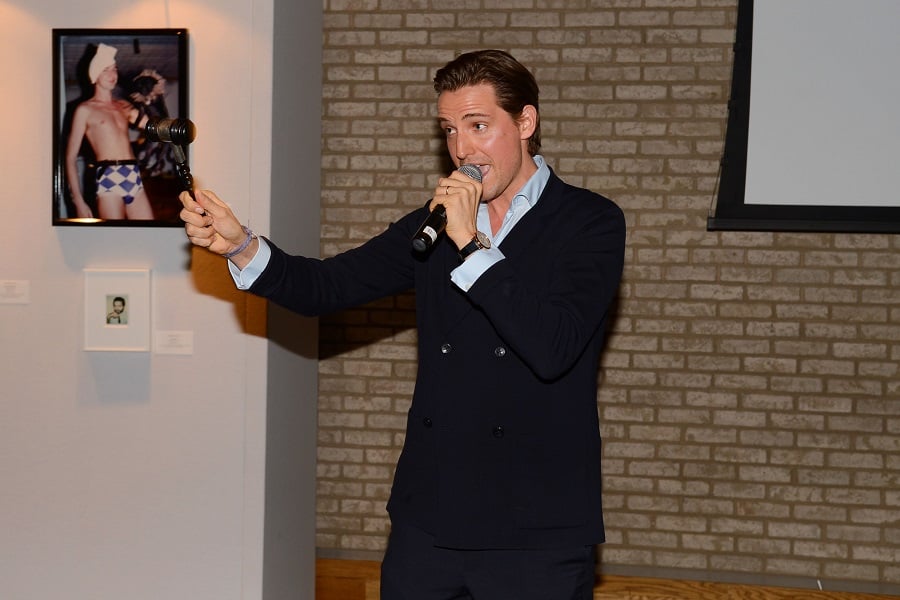
Alexander Gilkes at the Photographers for Friends Auction in 2014.
Photo: Patrick McMullan/PatrickMcMullan.com
7. Alexander Gilkes
What Paddle8 co-founder Alexander Gilkes might lack in art fair management experience, he certainly makes up for in charm, confidence, and connections. Each season, he helms Phillips’s evening auctions, having taken over the role from legendary auctioneer Simon de Pury in 2012. De Pury, who mentored Gilkes, once described his style as “absolutely masterful.” Paddle8’s 2012 partnership with The Amory Show presumably has given Gilkes some valuable insight into how the fair operates. An added bonus, given the increasingly overlapping realms of art and fashion? He is married to fashion designer Misha Nonoo. Their glamourous Venice wedding was attended by British royals Eugenie and Beatrice. (After a stint at Paddle8, Princess Eugenie is now returning to London to work at Hauser & Wirth as an associate director).
Related stories:
Armory Show’s Noah Horowitz Jumps to Art Basel as Head of Miami Fair
Hate Your Job? Armory Show Seeks New Director
Miley Cyrus Takes Art Basel Thanks to Jeffrey Deitch
Grand Gestures at Art Basel Unlimited
Magnus Resch Thinks the Art World Is Ready for an iTunes Style Shakeup